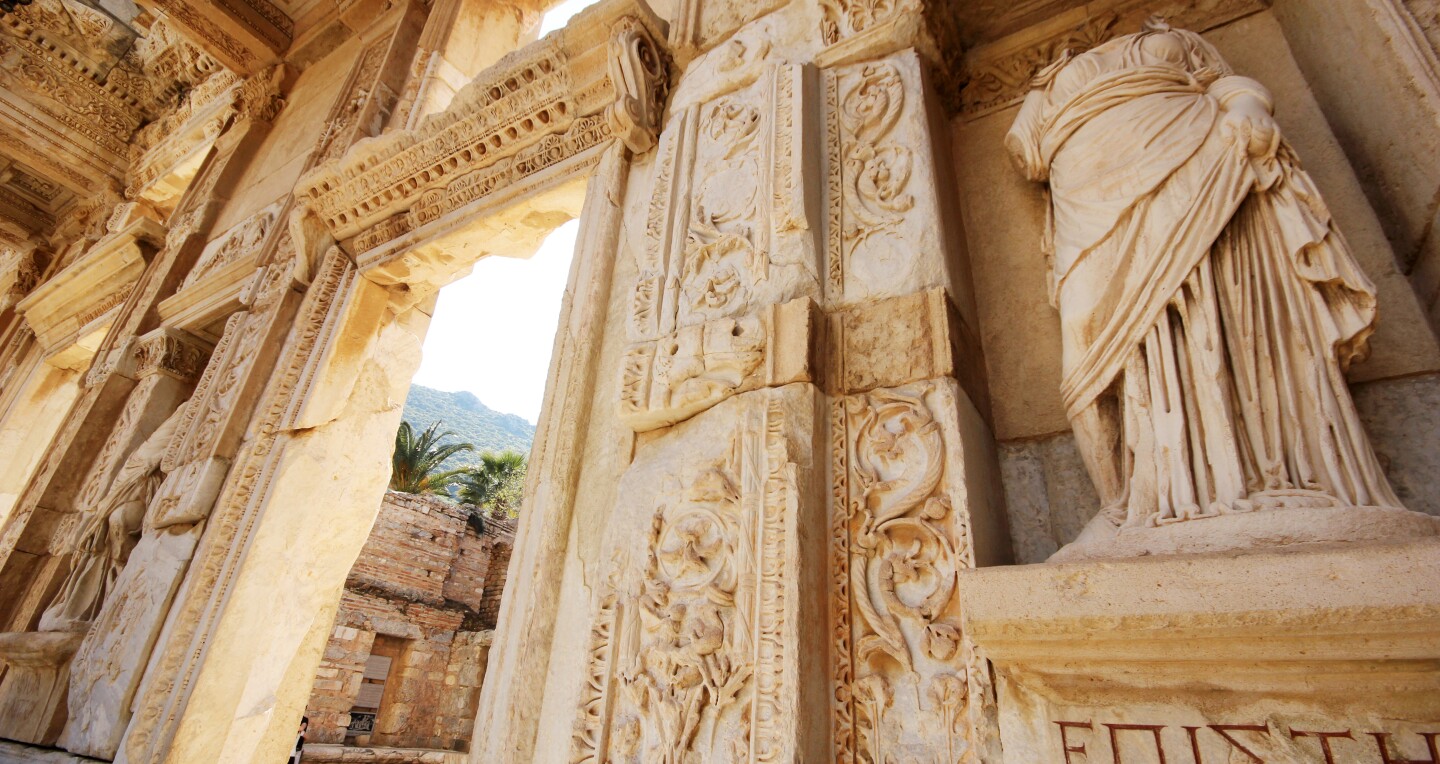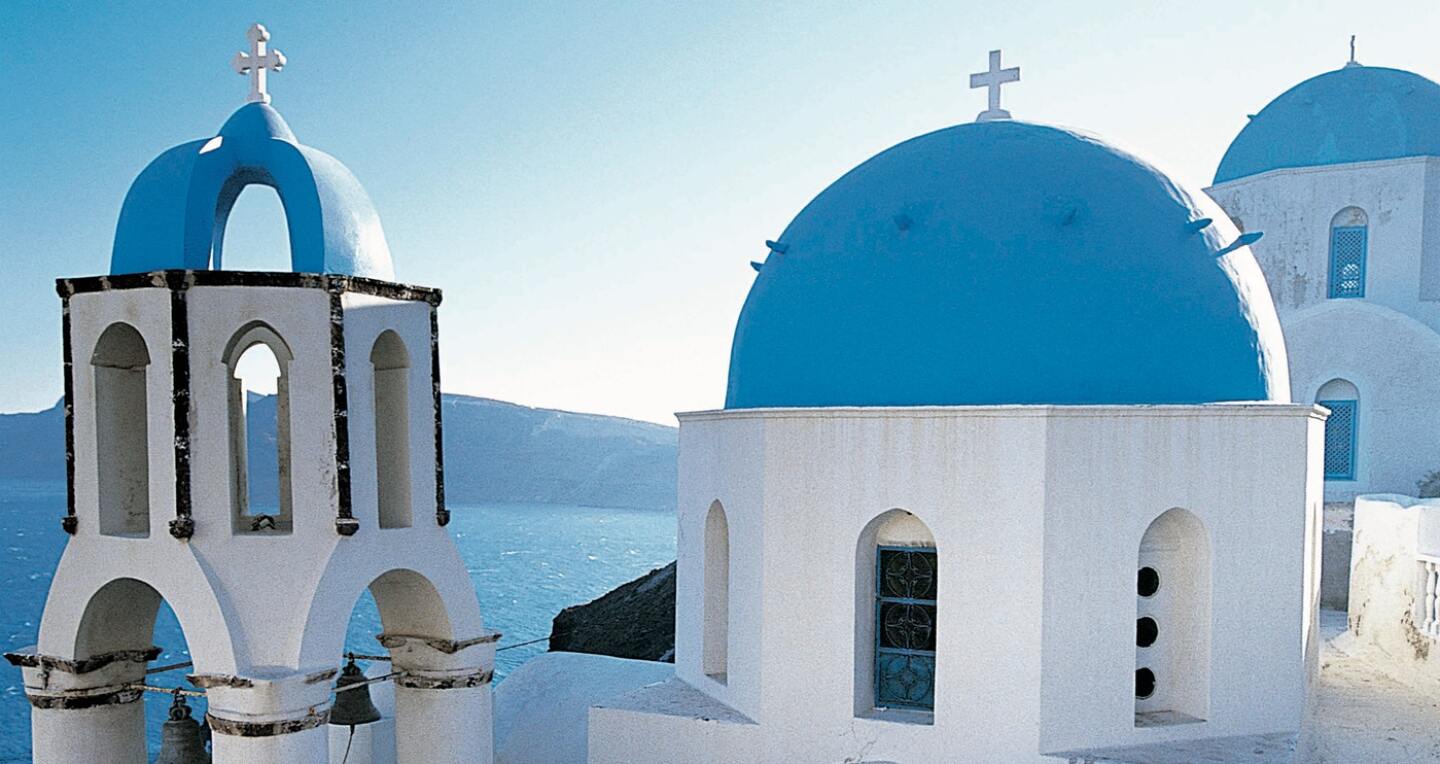Heroes of legend spent long periods at sea, leaving behind home life to discover the extraordinary sights and sounds that form the basis of Greek mythology. What they didn’t have was Wind Star, a fully equipped, four-masted sailing yacht that accommodates just 148 guests, provides four decks, and imbues every epic journey with genuine service from the heart. Plus, there’s an impressive Watersports Platform on the aft with complimentary kayaks and paddleboards.
Delighted modern-day voyagers describe Wind Star as their own private yacht. Its intimate scale helped Windstar win the AFAR Travelers’ Award for Small Ship Cruises and enables it to visit locales that bigger ships can’t for a truly unforgettable cruise. On this incredible voyage, that means exclusive stops at little-known, historic gems such as the Byzantine empire-era architecture of Patmos and Monemvisia that other cruise lines aren’t able to access. A Biblical experience, Patmos is where the Book of Revelations was written and with no airport on the island, you can only get there by boat. You’ll also dine in the shadow of the ancient city of Ephesus—under the stars and with live music performed by the Aegean Chamber Orchestra—at a complimentary Destination Discovery event. Enjoy it all as you cruise along the Aegean Sea, taking in the coastal scenery and visiting hallowed ancient treasures all along the way.
Itinerary / 8 DAY
PLAN YOUR TRIP
Kybele - stock.adobe.com
Day 1Athens
Book a full or half day tour to see as many sites as possible. Among the many unforgettable points of interest to explore when you disembark, the Temple of Hephaestus, National Archeological Museum, Ancient Agora, and Mount Lycabettus (whose summit, at 277 meters above sea level, is the highest point in Central Athens) are fascinating places to explore.

MYKONOS AND ITS WINDMILLS
massimo colombo
Day 2Mykonos
Pay your respects at the textbook example of Cycladic architecture, the historic Panagia Paraportiani Church. Its chalk-white exterior and astonishing asymmetry will leave you breathless. Another snow-hued island feature, resident pelicans roam around the church and surrounding harbor. Consider booking an excursion to the tiny uninhabited island of Delos, a UNESCO World’s Cultural Heritage Site—it’s a 45-minute ferry ride and spirits you off to the mythical birthplace of the Greek god Apollo and his twin sister Artemis.

ROMAN RUINS IN EPHESUS
Kybele - stock.adobe.com
Day 3Kusadasi
Outside of Ephesus lies the provincial town of Selcuk, home to two of the country’s biggest religious attractions, the House of the Virgin Mary and the Basilica of St. John. Explore the Basilica’s ruins, and you’ll be greeted by a marble slab that marks the (reputed) grave of St. John the Apostle. The Best of Ephesus tour will take you to all the above. Another highlight of Kusadasi, a forty-minute drive from the port, is rural Sirince, whose gorgeous landscape features charming wood-and-mortar houses, verdant olive groves and vineyards.

PATMOS
Day 4Patmos
Here, it’s easy to become a wandering pilgrim, and one’s journey is richly rewarded. Atop the island’s central hill sits the Byzantine Monastery of St. John, built in 1066. Around it, the structures comprising the village of Chora, home to an Orthodox convent, Evangelismos, display an extraordinary icon painting of Madonna and Child. A little over a mile away, halfway between Chora and Skala, is the Cave of the Apocalypse, where John envisioned the Second Coming. The Spirit of Patmos tour will take you to all of the fascinating highlights.

SANTORINI
Day 5Santorini
If you can part with the sand and surf, head to the Museum of Prehistoric Thira, to view the artifacts discovered among the ruins of Akrotiri, a Bronze Age settlement that’s now a UNESCO site. Oenophiles can embark on the Wineries of Santorini and Ola Village excursion or simply dive into wine tasting at one of Santorini’s many vineyards, among them Argiros Estate, Boutari Winery, Roussous Winery, and Santo Wines.

MONEMVASIA
Day 6Monemvasia

A BELFRY AT THE TOP OF PALAMIDI FORTRESS IN NAFPLIO
TETIANA - stock.adobe.com
Day 7Nafplio
The Fortress was impenetrable until its occupation by the Turks in 1715, and returned to Greek control in 1822, when the Greeks won independence from the Ottoman Empire. (Find out more at Nafplio’s War Museum, an annex of the Athens War Museum; and visit the Archeological Museum of Nafplio to see artifacts from the Prehistoric and Mycenaean Era.) Renowned for making komboloi, the worry beads used to pass time in Greek (and Cypriot) culture, Nafplio showcases billions of beads at its Komboloi Museum. Also highly recommended for more cultural insight is the Argolis UNESCO sites tour that takes guests to the ancient ruins of Mycenae and on to Epidaurus, where people have come for centuries in search of healing from the Greek gods.

THE ACROPOLIS
John Greengo john@johngreengo






